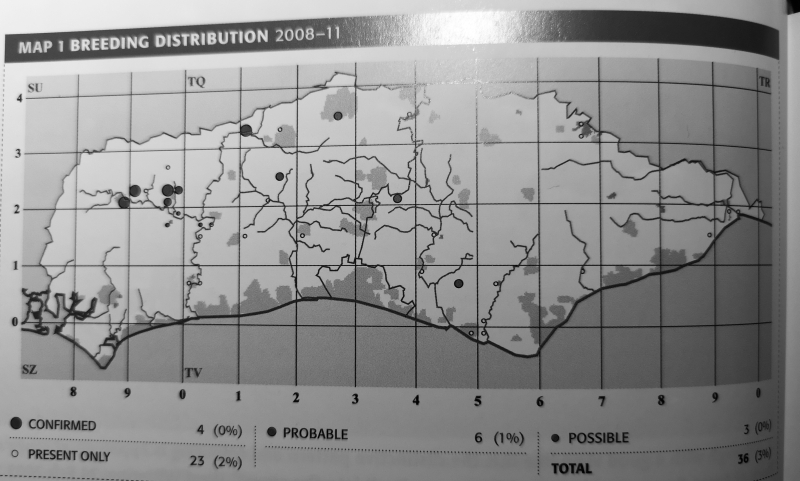
My recent surprise at seeing Egyptian Geese for the first time in the Marsham Valley was, of course, in the context of them being absolutely everywhere else, nesting on tiny little ponds at Egerton & Alexander Parks and recorded in flocks of over 100 in the Far East of the county. But it wasn’t always like that so I had a look at Birds of Sussex in which the maps derive from the 2008-11 Bird Atlas.
Apologies for the quality of the photos but they suffice to emphasise the extent of the species’ spread in just a dozen years, recorded from 32 tetrads in the Atlas and 143 in 2022.


An even more astonishing picture is presented by the national figures in the last BTO Breeding Bird Survey where an enormous expansion is noted.
Egyptian Geese were introduced in 1678 as an ornamental species in St James’ Park, London but for many years remained in few areas, albeit in large numbers. I first saw (a lot of!) them at Gunton Park, Norfolk in the early 70s at which time, in spite of their numbers they remained pretty much ignored by birdwatchers since, as a feral species, they didn’t count as real birds. A similar story for Ring-necked Parakeets, now present in huge numbers but at first so little recorded that their UK origins are clouded in myth concerning an escape from the set of “The African Queen” or a release by Jimi Hendrix.
They didn’t get to this part of the world until 20 years later. (SBR for 1995 just one record; in 2000 first county breeding record & at that point only one record in E Sussex.)
So what propelled the Great Leap Forward? Even “Birds Britannica” of 2005 makes no mention of a range expansion. It could be the ameliorating climate: since they nest very early in the year, cold weather could limit breeding success therefore containing populations, but the milder winters we now experience would release that brake.
In 2017 the UK government designated them as an Invasive Alien Species and their presence in this area has not been greeted with whole-hearted enthusiasm, especially since, rather then nesting in holes in trees, they seem happy enough on the ground on islands where they loudly compete with other breeding birds, some of those pre-established feral species….